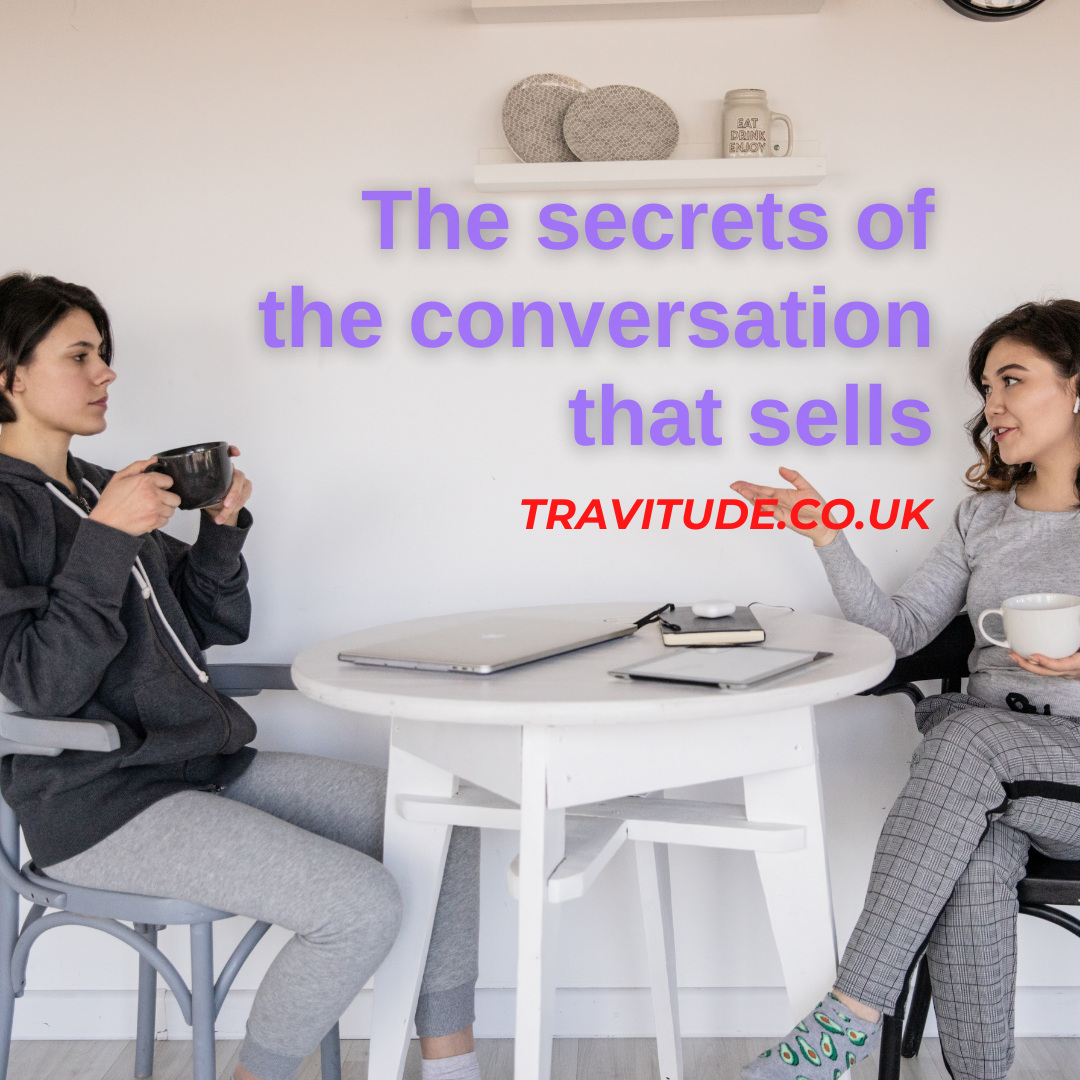
Today we are going to talk about a mindset that will change the way you approach the online travel business. In this article you will find out how you can transform a conversation that you are already having in traditional travel sales and adapt it to the online context.
Let's start with the typical travel sales conversation that you have offline. What happens there? A customer gets in touch with you by phone or in person, wanting to travel somewhere. What do you do? You ask some questions in order to determine the most important criteria for that customer - things like quality, location, budget, kids, etc.
During that conversation, you are acting like a guide for the customer. If the options that you show him/her are not suitable, the customer will raise some objections. You then present alternatives to counter those objections. If you have experience in traditional travel sales, you already have in mind some typical scenarios based on the chosen destination.
Offline, this conversation takes, say, an hour. Online, you don't have the luxury of an hour’s attention from your customer. This is one of the advantages of offline. When you have somebody's attention for an hour, it is a good sign that the person is very interested and ready to buy. However, this comes at a huge cost: your time or your travel agent’s time.
If you want to succeed, you have to analyse what is happening in your typical offline conversations and adapt this to the online context. Online, you put your website and the ads that you are running to work for you instead of using your precious time.
This is much more scalable if you design a good online sales conversation. You can serve hundreds of people with the same resources with which you are now serving one. This comes at a cost too, but if you do it right the cost will be far less than with the traditional model.
In order to move your typical offline conversation online, you should have a look at what is happening now in your conversations. You have to split those conversations into typical stages.
For example, you might start the conversation by showing some three-star hotels in a destination and outlining their advantages. Then, if the customer says he would rather stay at a four-star hotel in a different location, you provide alternatives. If the customer says he has a different budget, you adjust the offer, and so on. As we said before, this takes place over an hour-long conversation. If you want to move this online, you have to consider each of these stages as a separate ad.
Returning to the earlier example, this means that you create an initial ad targeting one destination presenting three-star hotels. Then, for the people who showed interest but weren’t converted, a few days later you display a different ad with four-star hotels with an attractive description. The process continues by displaying different ads to interested people for the stages that they might be interested in.
Bear in mind that a good online platform like Travitude helps you track what people visiting your website have done and creates audiences for each of these stages. The majority of your marketing efforts will go towards the initial ad. The rest will be directed to the re-marketing ads (the next stages). Those re-marketing ads are much cheaper and go straight to people who have shown interest. In fact, this is the most important thing: to display ads to people who have shown interest.
By thinking like this, you will move the one-hour conversation online. It will be a conversation in byte sizes consumed in the customer's time: a minute or two today, another couple of minutes tomorrow, and so on. In the end, if the customer sees that you continue to present alternatives targeted to what he wants to buy, he will keep you in mind and when he is ready he will finally buy.
If you don’t do this, what will happen? People just see an ad and if they have an objection they don't have the chance to find a solution. They leave the website and move to another one in search of something that suits them. Of course, some of them will find a good fit at first glance, but this is down to luck, not strategy. A good strategy keeps your offers before the customer's eyes until he buys.
If you want to receive more articles like this, you can subscribe to our 20+ series of emails in which we talk about what works best in today’s online travel business. Or, if you are curious to find out more about our online platform and how it can transform your travel agency business, schedule a demo Zoom call with our sales team.